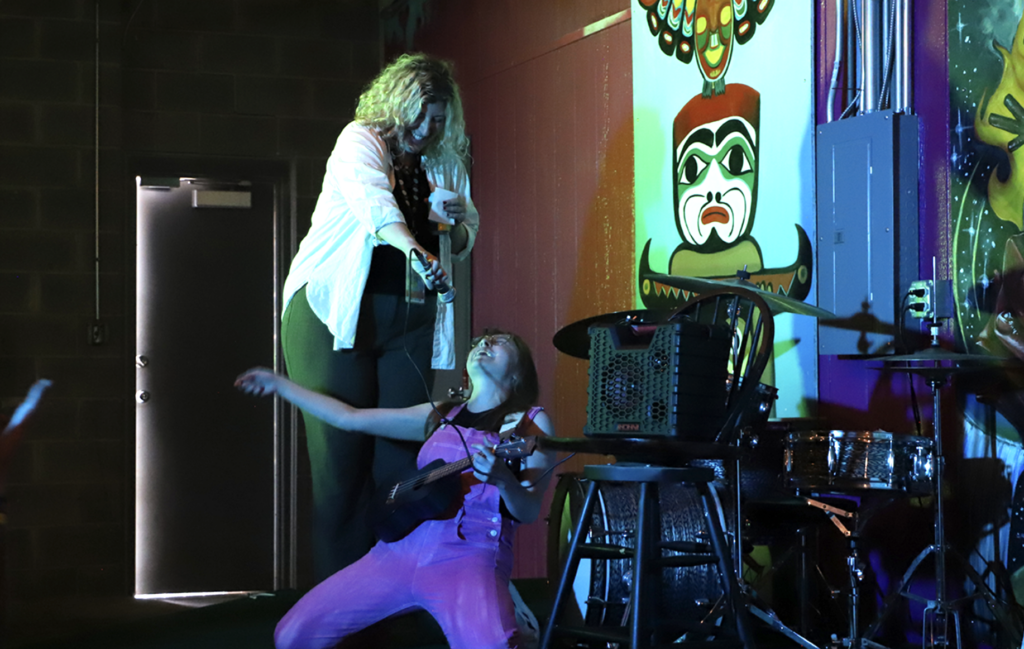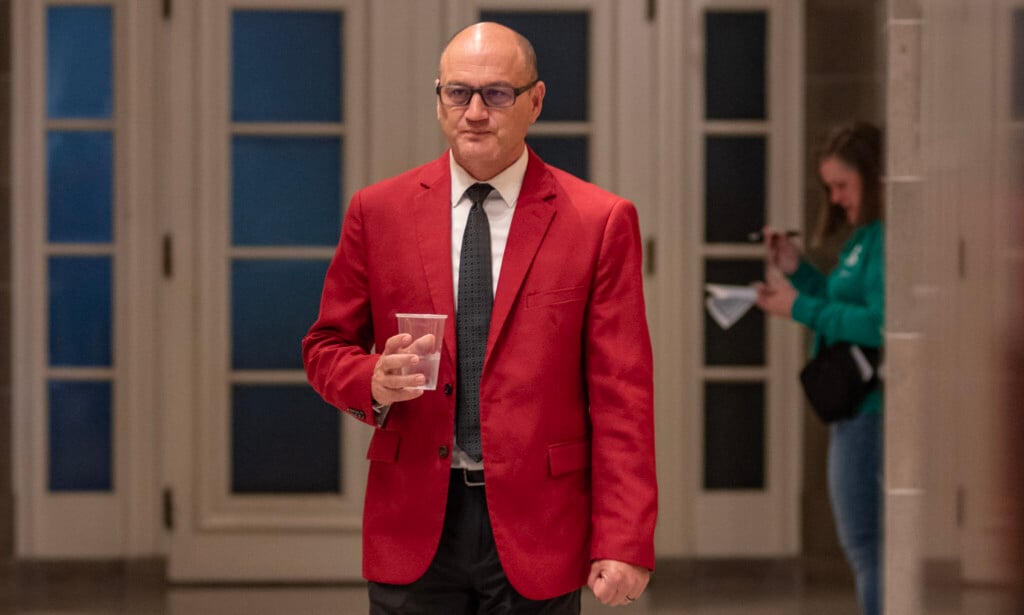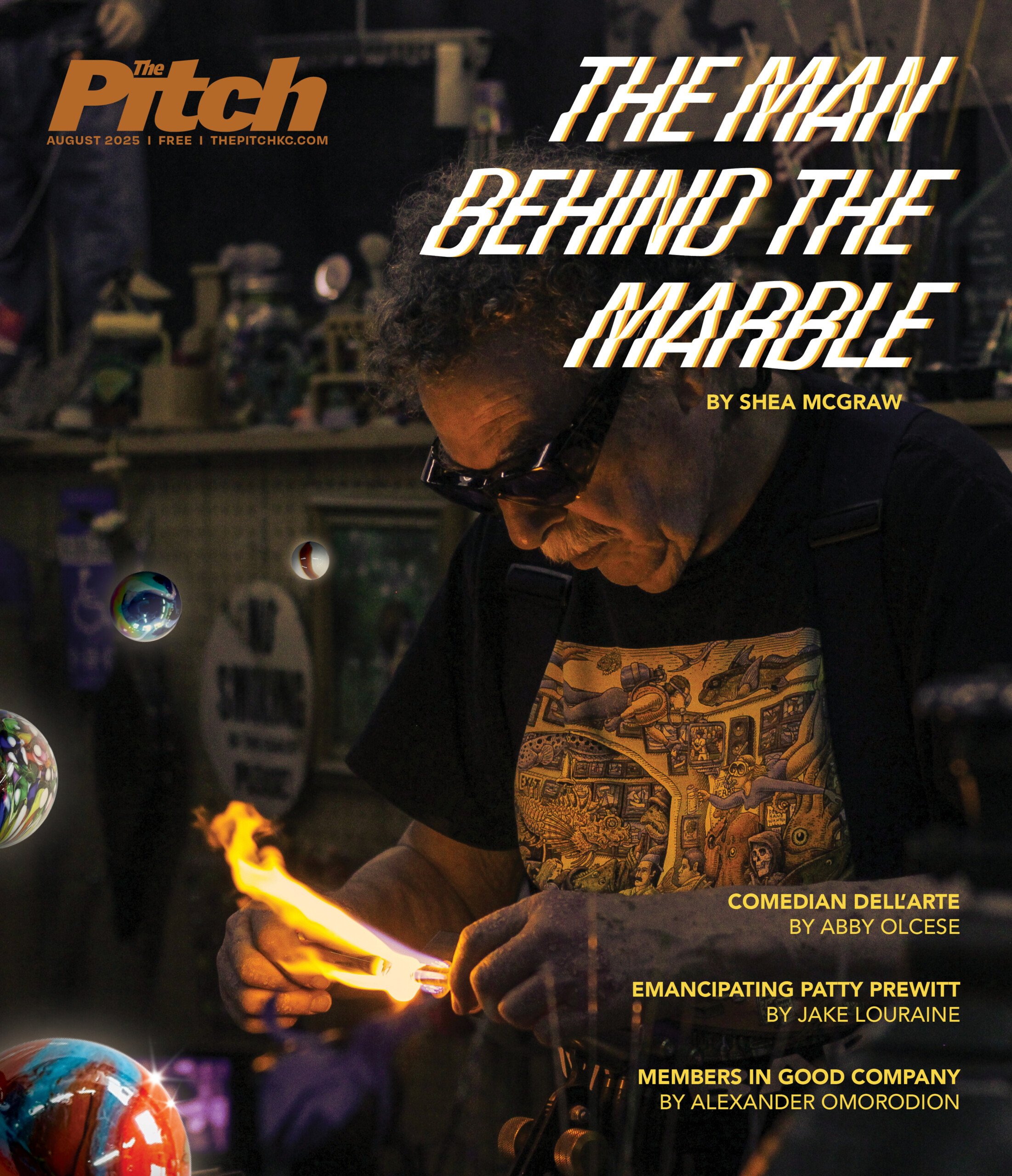Kansas City voters approved a hail-Mary sales tax to benefit a majority-black chunk of the urban core. Now what?

Inside Johnny’s Donuts and Hamburgers, in early April, I ordered a half-dozen doughnut holes and asked the man behind the bulletproof glass what he thought about the election. Two days before, Kansas Citians had voted to tax themselves to fund economic development on the East Side. Johnny’s, at 44th Street and Prospect, sits in the middle of the area that would benefit from the tax. Were people in the neighborhood excited about the outcome? What difference did they think it might make?
“Election?” the man asked me.
I explained the ballot measure, an eighth-cent sales tax estimated to send $8 million a year over the next decade to the area extending north from Gregory Boulevard all the way down to Ninth Street, and west from the Paseo to Indiana Avenue. I tapped on the glass, pointing down at copies of The Call for sale in front of the window. The headline about the election sat above the fold. He shrugged.
“Won’t make any difference either way,” the man said, dropping my bag of holes and my change into the deposit tray and sliding it my way.
I got a similar reaction from a middle-aged guy doing yard work outside a home near 29th Street and Indiana: Never heard of it. At the McDonald’s at 14th and Prospect, I asked an old-timer reading the Star in a booth. Nope.

I dropped by that same McDonald’s the next day to eavesdrop on Eggs and Enlightenment, a Friday-morning ritual on the East Side at which locals gather to bandy about community issues. Surely here the One City initiative, as its petitioners called it, would figure into the day’s conversation. But most of the informal meetup was spent talking about how marijuana decriminalization — another measure that had passed on the same ballot — would affect young black men in Kansas City. I had to leave before the meeting concluded, so I later called Sonny Gibson, a local historian of African-American culture in Kansas City, to ask whether I’d missed any juicy discussion. He acts as a sort of moderator of Eggs and Enlightenment, banging a long gavel on the table when it’s time to change topics.
Gibson told me he had voted against the tax.
“We’re not going to get anything out of it,” he said. “By the time that money trickles down to the community, there’ll be hardly anything left. Go back and look. It always happens this way. It’s the top echelon of decision makers who benefit from these things, not the people of the community.”
I asked him what he’d like to see happen with the $8 million a year.
“How about the city comes out and cleans up these streets and alleys that are full of dead trees, overgrown trees, brush, debris?” he said. “How about a program that makes it so elderly citizens don’t have to go to bed with their raincoats on because they got a leaky roof on their house? How about that? But we won’t see that. Because the people making these decisions, they don’t have leaky roofs.”
Not everybody views the passage of the One City initiative through shit-colored glasses. The city councilors who represent the Prospect corridor districts say they’re heartened by the vote. Fifth District Councilwoman Alissia Canady called it a “huge victory for Kansas City.” Jermaine Reed, in the 3rd District, said the constituents he’d spoken to were excited “because, over the last 40 years, they have experienced disinvestment of resources in their community. He added that the vote would “create a catalyst for redevelopment” along Prospect.

Surprise seemed to be the most common reaction to One City’s passage, though. The initiative started out as a grassroots petition cobbled together by many of the usual East Side institutions: Freedom Inc., the Urban Summit, the Southern Christian Leadership Conference of Greater Kansas City, the Urban League, Communities Creating Opportunity. It represented a counterweight to the ballot item that received top billing in April’s municipal election: an $800 million bond to pay for sidewalks, bridges, streets and other infrastructure repair across the city. If the $800 million “GO bond” was a plea to invest in the future of Kansas City, One City was a shout to invest first in a long-forgotten part of the city, home to its poorest residents. Many of the One City supporters opposed the $800 million “GO Bond,” and vice versa.
Virtually nobody gave One City a prayer. The conventional wisdom was that the (predominantly white) Northland vote would sink it. Not even our popular black mayor supported it, citing concerns that don’t sound far removed from Gibson’s. “I can’t support a tax I have zero idea what it’s going to be used for and controlled by zero people that I don’t know who are going to be,” Mayor Sly James told the Star. City Manager Troy Schulte also opposed it, telling the Star that he “would quibble that the Prospect area has been ignored.” As evidence, Schulte pointed to the recent groundbreaking of a grocery store at Linwood and Prospect, a new police crime lab at 26th Street and Prospect, and the demolition of Land Bank houses throughout the corridor.
But on Tuesday, April 4, more than 60,000 people — about 25,000 more than voted in the 2015 mayoral election — hit the polls and awarded One City roughly 52 percent of the vote.
“The strategy was to reduce the loss in the Northland to about 40 percent, have a slight win in the western corridor, an even split everywhere else and drive the vote margins up in central city areas,” Kenneth Bacchus, a former city councilman and supporter of the initiative, told me. “Well, we only received about 35 percent up north, but made up for those losses [south of the river].”
“It did well — better than we’d thought it would — in Brookside and Waldo and Hyde Park,” Melissa Patterson-Hazley, the initiative’s campaign manager, told me. “That was important. I don’t think it would have passed otherwise.”
Patterson-Hazley said even people who worked on the campaign were stunned at the result. “Honestly, I think people kind of view it as a miracle almost,” she said.
Following the election, local pundits raced to give credit to the mayor for leading the way on the passage of the $800 million infrastructure bond. (The Star christened him “King James” in one editorial.) Certainly, the vote reflects the electorate’s confidence in James and the council to responsibly handle their tax money. But how to explain the victory of One City, which James opposed? I suspect both the Go Bond and One City wins have just as much to do with an anti-Trump bump — liberal voters mobilized and eager to have their voices heard in the first election after November — as they do with their feelings about the mayor. A better yardstick of James’ political brilliance will be whether he can sell a new airport terminal to a bunch of tight-fisted old-timers who fear change.

Regardless, the city must now figure out how to administer millions of tax dollars that it wasn’t planning to have. The first step is to form a five-member commission to decide how the cash gets doled out. Three spots will be appointed by the mayor and council, one will be appointed by Kansas City Public Schools, and one will be appointed by Jackson County. Reed says plans are under way for the council to meet soon to discuss appointees.
Gwendolyn Grant, president and CEO of the Urban League, says her organization would like to see “a cultural heritage district along Prospect similar to Chinatown in San Francisco or Little Italy in New York.” She adds: “Also, we need money for pre-development costs. Getting development done in urban areas like this [the Prospect Corridor] is expensive. Funds to defray the costs of blight removal, land acquisitions and environmental issues would be helpful in accelerating development.”
An expansion of bus service along Prospect is also on the table. The Kansas City Area Transportation Authority is holding its breath on federal funds that would allow it to bring MAX service to Prospect. Dick Jarrold, vice president of regional planning for the KCATA, says resources from One City could potentially fund projects complementary to the expansion, such as retail developments near major stops or infrastructure connecting bus passengers to local amenities.

“But we don’t know enough about how this program will be administered to say at this point how beneficial it will be to it [the Prospect MAX],” Jarrold says.
Uncertainty seems to be the consensus at this point. Meanwhile, cautionary tales lurk within the boundaries that will benefit from One City. Over the past 25 years, the city has spent in excess of $100 million in public dollars to revitalize the 18th and Vine District, with little evidence of economic development to show for it. Likewise, the city’s attempts to redevelop the Citadel site at 63rd Street and Prospect — where Canady says she’d like to see One City funds support a mixed-use development — failed spectacularly, resulting in a decade of lawsuits, criminal charges and the loss of millions in taxpayer money.
Bacchus says the only concerns he’s heard from East Side residents are that the City Council will try to “hijack the process and use the dollars in ways not anticipated by the petitioners.” He thinks it’s key that a plurality of the commission members live within the geographic corridor.
“It [the commission] should include people who have shown over the years that they actually support the uplifting of these areas,” Bacchus says. “Good common-sense community people without any organizational conflicts.”
No organizational conflicts: That’s a tall order in this city. But the voters have spoken — even if it’s unclear what they can expect.




